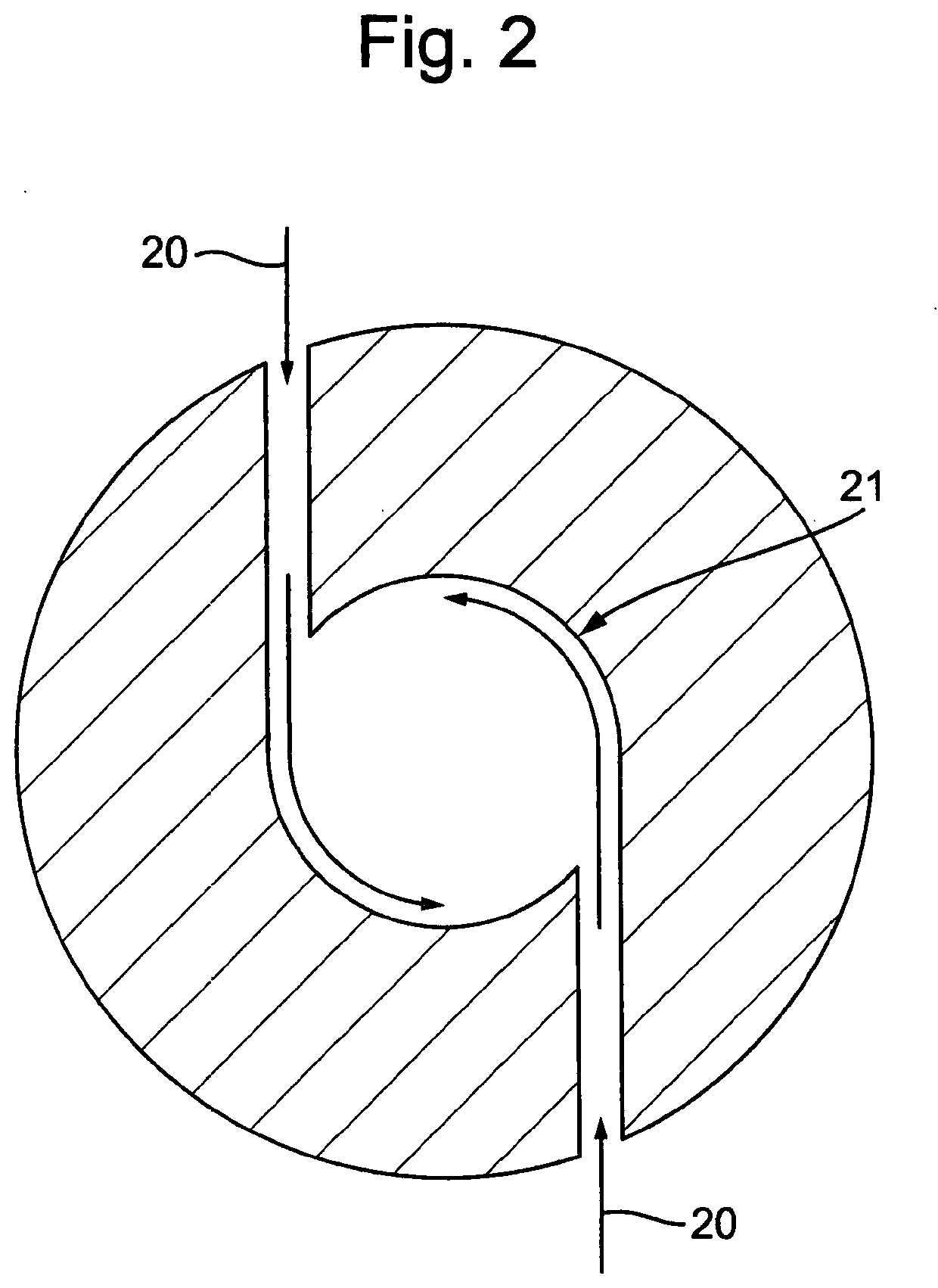Production of nitrogen oxides
a technology of nitrogen oxides and nitrogen oxides, which is applied in the direction of gas generation devices, gas-gas reaction plasma state, inorganic chemistry, etc., can solve the problems of insufficient efficiency to compete with established non-plasma methods of production, insufficient efficiency of processes developed to date, and insufficient efficiency of overall process, so as to avoid the need for enriching feed gas, increase production rate, and increase plant capacity
- Summary
- Abstract
- Description
- Claims
- Application Information
AI Technical Summary
Benefits of technology
Problems solved by technology
Method used
Image
Examples
specific example
[0042]In this example a microwave plasma chamber 1 is used for the purposes of the formation of oxides of nitrogen, NOx, including nitric oxide and nitrogen dioxide. A second catalyst reactor chamber is not used in this example. The arrangement of the equipment is shown in FIG. 3. A 2.45 GHz 6 kW microwave generator is used. The diameter of the exit nozzle (choke) from the plasma reaction chamber 1 is adjustable. The reaction chamber length can be changed by incorporating additional sections. The reaction reactor 1 is equipped with auxiliary gas inlets at points 9 on the wall of the reactor vessel.
[0043]The reaction reactor 1 can operate at pressures from atmospheric to 4 bar gauge, although it is best operated above atmospheric pressure. When operating above atmospheric pressure a cooling coil is fitted 12 between the reactor outlet 11 and the back pressure regulator 13 in order to prevent heat damage to the pressure regulator 13. The pressure regulator is adjusted by reference to ...
experiment 1
[0050]The effect of feed gas composition on NOx production at atmospheric pressure
[0051]A simplified reaction of nitrogen and oxygen can be written:
N2+O22NO and 2NO+O22NO2
[0052]On a molar basis it is therefore expected that higher yields of NOx product would be expected by increasing the % of oxygen in the reactant mixture and previous work (ChemSusChem 2017, 10, 2145-2157) has reported that higher yields of NOx can be obtained using approximately equimolar ratios of nitrogen to oxygen.
[0053]NOx production was measured at a fixed gas flow rate (24 l / min) and using a fixed continuous MW power input (4.0 kW) was investigated while varying the N2:O2 ratio.
[0054]The readings for both NO and NO2 are shown in the table below.
TABLE 1N2:O2 ratioNONO2NO + NO25407606683474433378801002447409239390804747437133866861147477
[0055]The results show that the total concentration of NOx produced is rather insensitive to the nitrogen to oxygen ratio and that it decreases at the lowest nitrogen to oxyge...
experiment 2
[0056]The effect of continuous power level input on the energy efficiency for NOx production at atmospheric pressure
[0057]Operation of the plasma at atmospheric pressure was carried out in order to determine the efficiency of the MW plasma. The NO / NO2 production was studied using different gas flow rates between 25 and 301 / min. The microwave input power was chosen as 3.5, 4.0 or 4.5 kW. The data collected are shown in the table below.
TABLE 2EnergyForwardTotalefficiencyTotal FlowPowerNO + NO2N fixed(energyl / min(kW)concentration(rate)per unit)253.53981243.6100.6254.04336945.3105.5254.54727746.3108.9303.53829338.187.1304.04188139.091.1304.54633139.192.6
[0058]The results show that for a given energy input the best energy efficiency is obtained at the higher flow rate.
PUM
| Property | Measurement | Unit |
|---|---|---|
| pressures | aaaaa | aaaaa |
| pressures | aaaaa | aaaaa |
| pressures | aaaaa | aaaaa |
Abstract
Description
Claims
Application Information
 Login to View More
Login to View More - R&D
- Intellectual Property
- Life Sciences
- Materials
- Tech Scout
- Unparalleled Data Quality
- Higher Quality Content
- 60% Fewer Hallucinations
Browse by: Latest US Patents, China's latest patents, Technical Efficacy Thesaurus, Application Domain, Technology Topic, Popular Technical Reports.
© 2025 PatSnap. All rights reserved.Legal|Privacy policy|Modern Slavery Act Transparency Statement|Sitemap|About US| Contact US: help@patsnap.com



